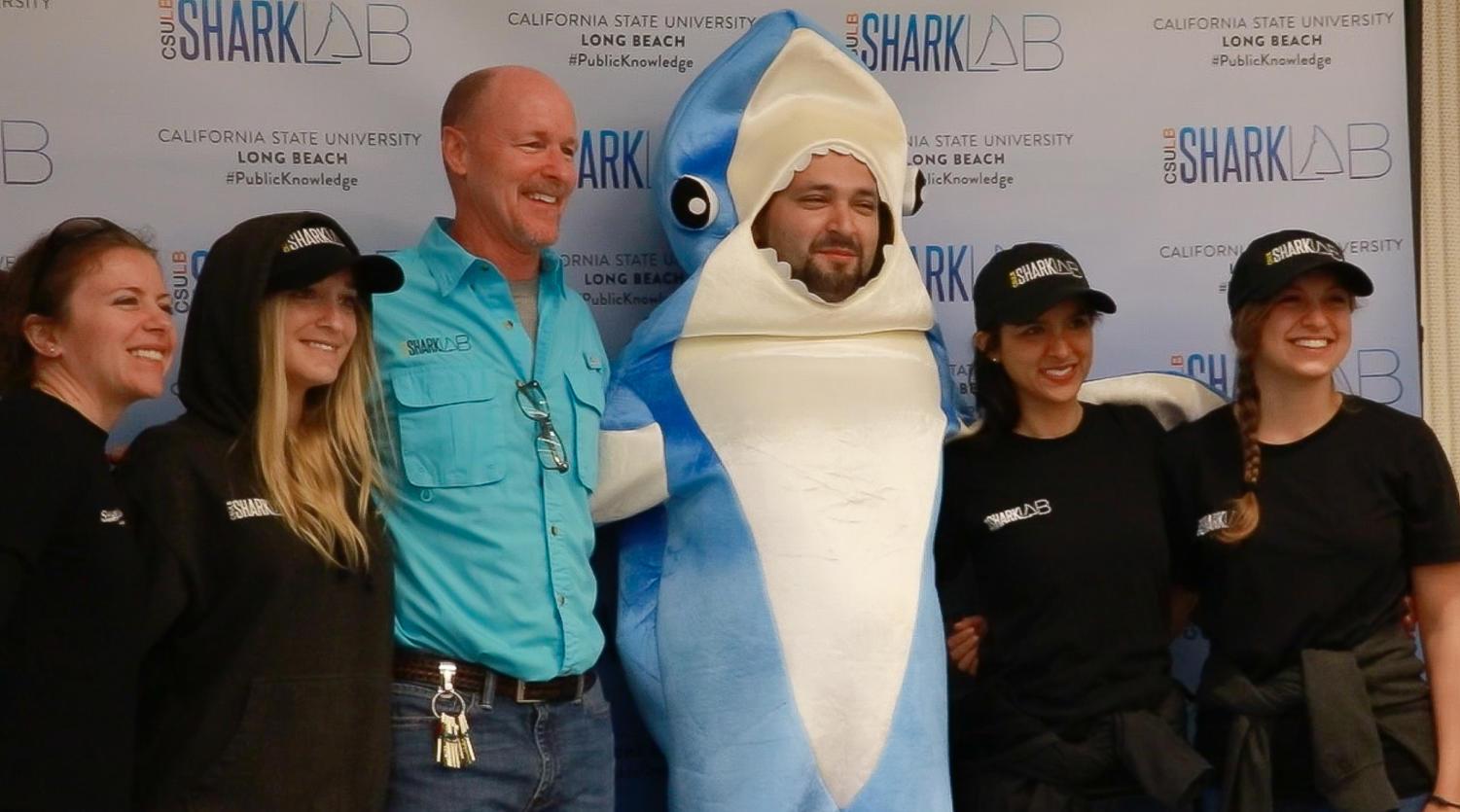Popularized films such as “Jaws” and “Finding Nemo” have long exacerbated the fear of sharks, but on Saturday, Cal State Long Beach and Assemblymember Patrick O’Donnell’s office collaborated in hosting Shark Day in order to dispel the rumors and raise awareness about these forward-swimming marine animals.
As soon as the lecture hall filled, O’Donnell thanked Chris Lowe’s Shark Lab for its research and the numerous lifeguards in the audience for keeping beachgoers safe.
Lowe provided information about the presence of juvenile white sharks in Southern California, specifically about their migration patterns and increasing population after years of protection from overfishing.
He talked about the use of underwater trackers, which use radio waves to send the longitude and latitude of a shark’s location to the campus Shark Lab. From there, they documented the data.
“The purpose is to better understand shark behavior because they are very important to our marine ecosystem,” Lowe said.
As much as pop culture has glorified shark attacks, Lowe emphasized that sharks keep marine mammal and fish populations healthy and upkeep other vital habitats.
After the presentation, Lowe transitioned into Q&A. One question came from a child who inquired about the white shark’s eating habits.
“You know, it’s really hard to determine what exactly they eat, but we’ve dissected the bellies of some and seen that many juvenile white sharks eat mostly stingrays,” Lowe responded. Amused by the prospect of dissecting a marine animal, some of the awestruck children in the room giggled.
Soon after, the audience was escorted to the Hall of Science, where the Shark Lab is situated.
Students working at the Shark Lab have the opportunity to conduct their own research, according to Jack May, who is working toward a masters in biology at the Shark Lab.
“Each student has their own little thing they’re working on, one is studying sea turtles and another student is focusing on the toxicology of thresher sharks,” May said. Currently, he is conducting a project which uses drones to monitor leopard sharks in shallow water aggregations.
May expressed his satisfaction with the turnout.
“I’m glad we had a full house,” May said. “The more people who know about where sharks are located and why, the better we can help protect people at the beach.”
In the Shark Lab, parents, children and students were able to view marine animals such as starfishes, sea urchins and baby sharks. Many took photos and asked students involved with the shark lab questions. Children in attendance were especially excited to see the variety of creatures.
Shelby Ly, a senior majoring in graphic design, heard of the event through the CSULB Sustainability page on Facebook.
“I wanted to check out the Shark Lab,” Ly said. “I’ve always been interested in marine animals and conservation.”
She said that protecting sharks is a moral and ecologically imperative.
“Even though there are a lot of sharks in our coastal waters, they don’t pose a threat to us, and we need to monitor their migration patterns and their population to keep them safe,” Ly said.




